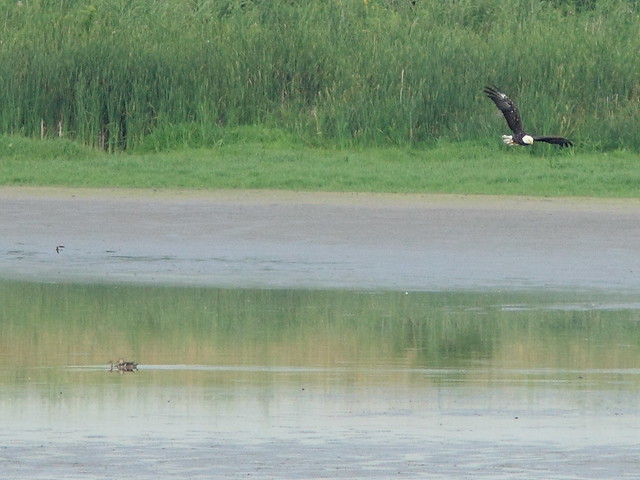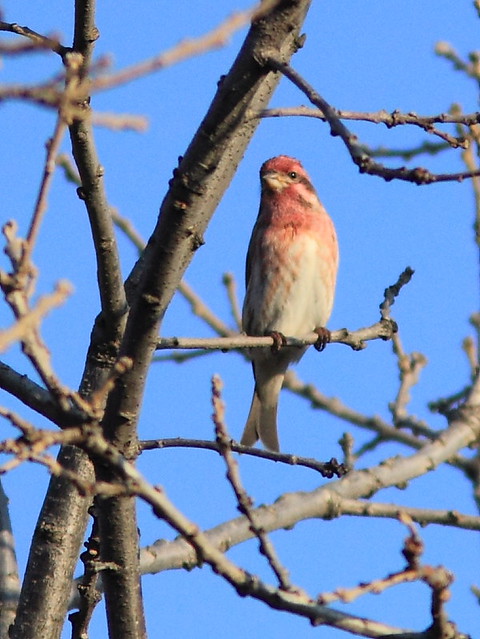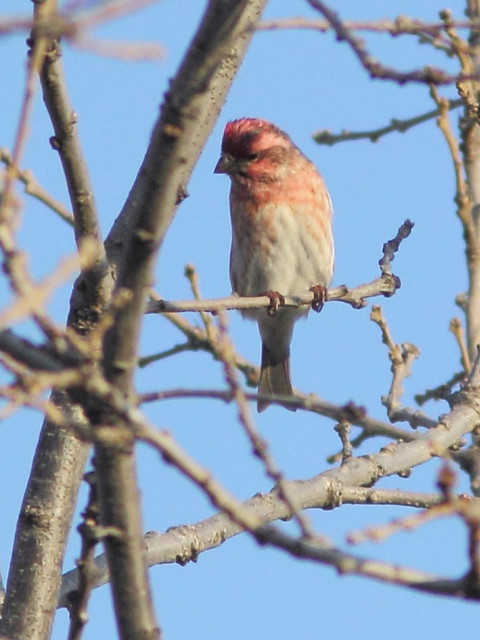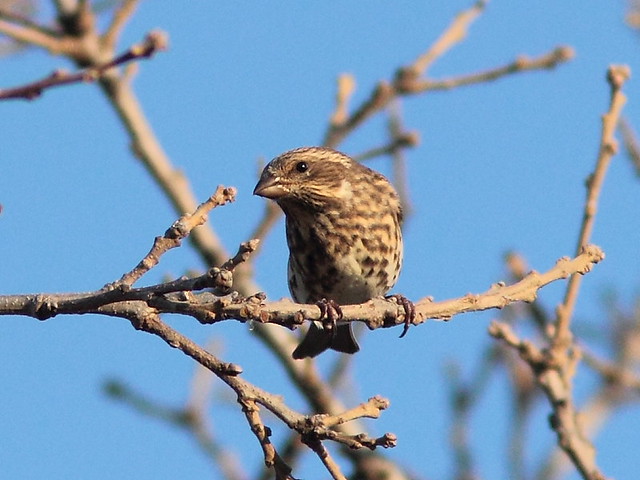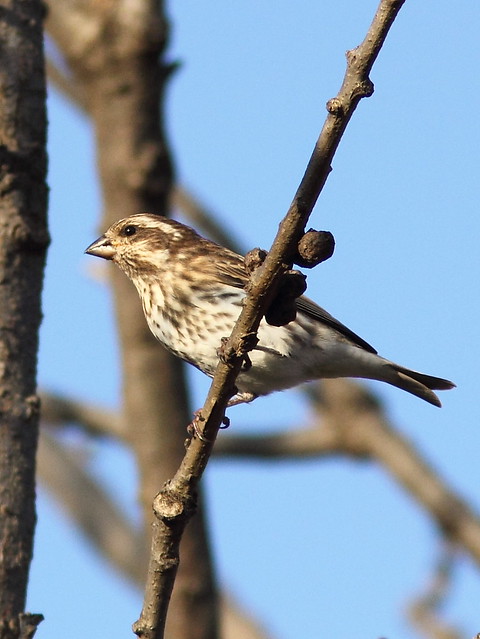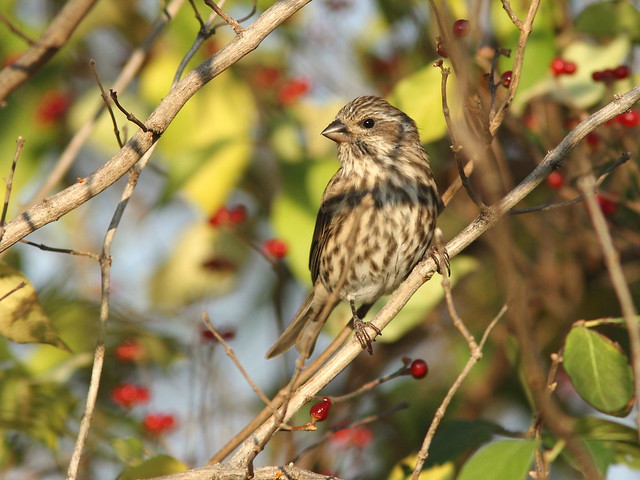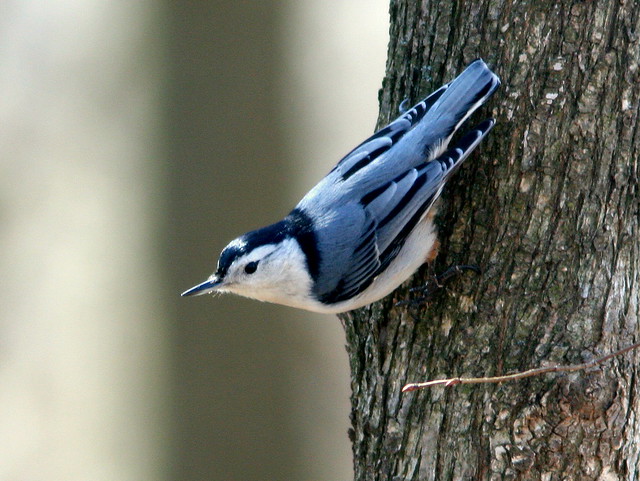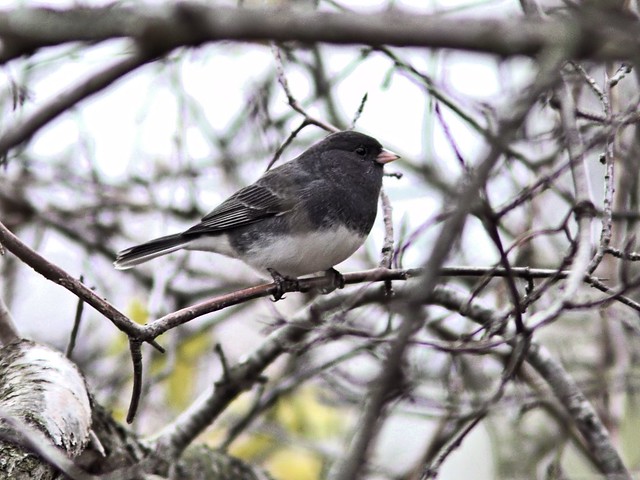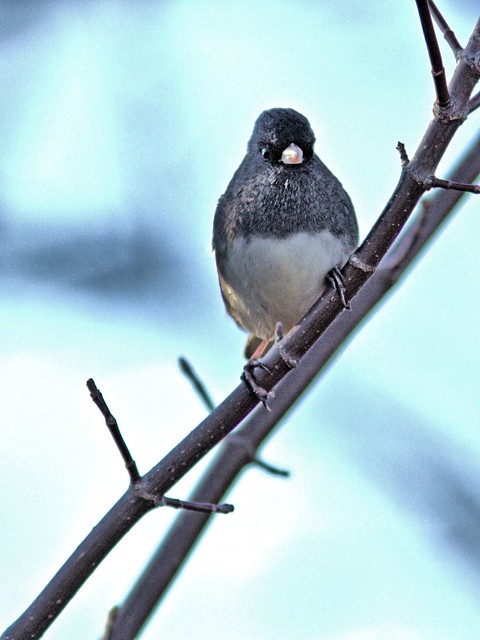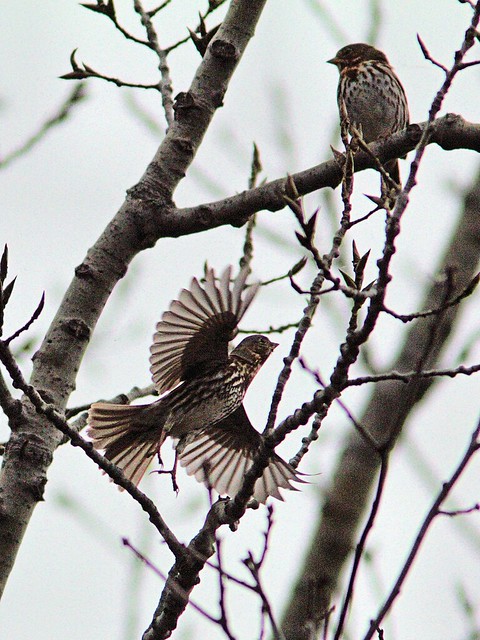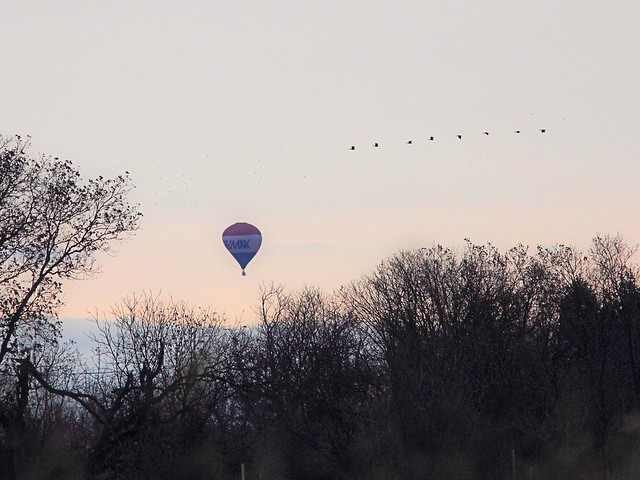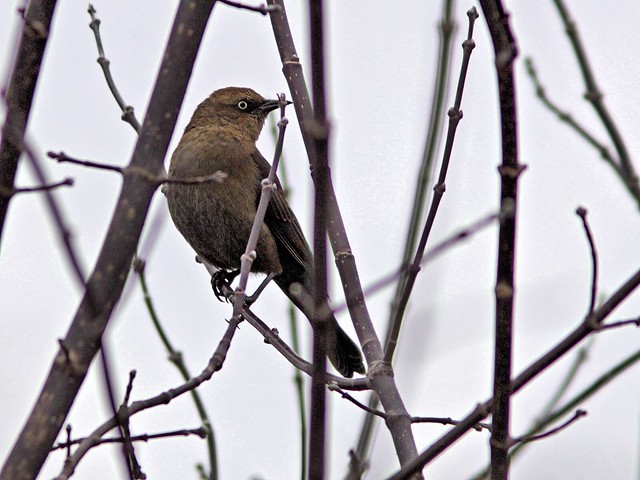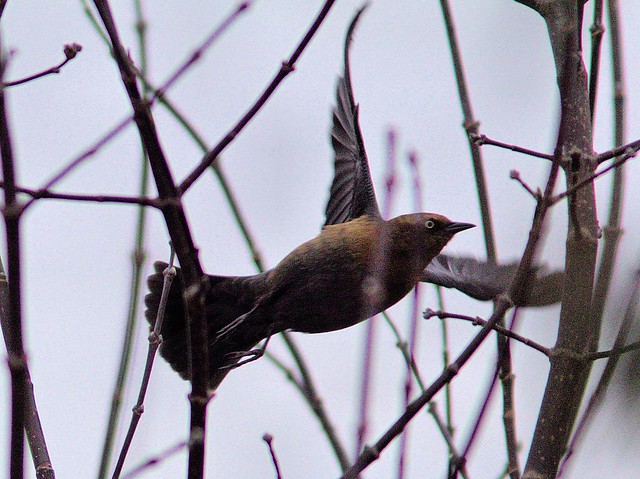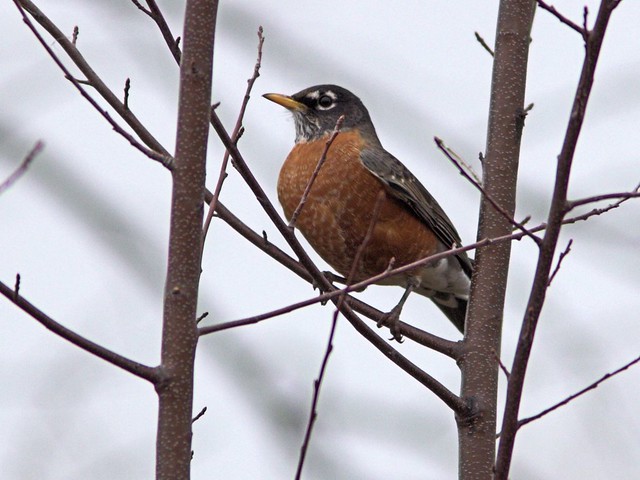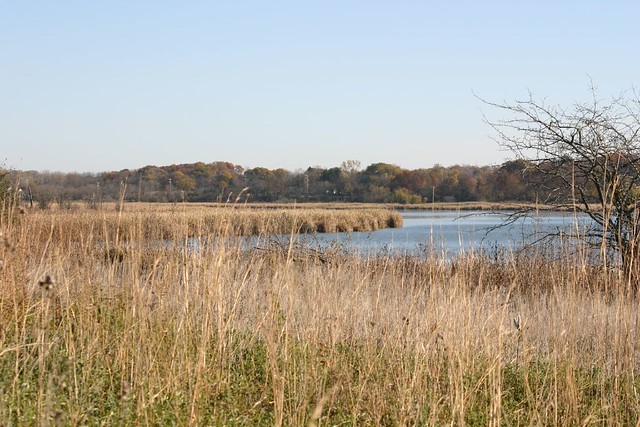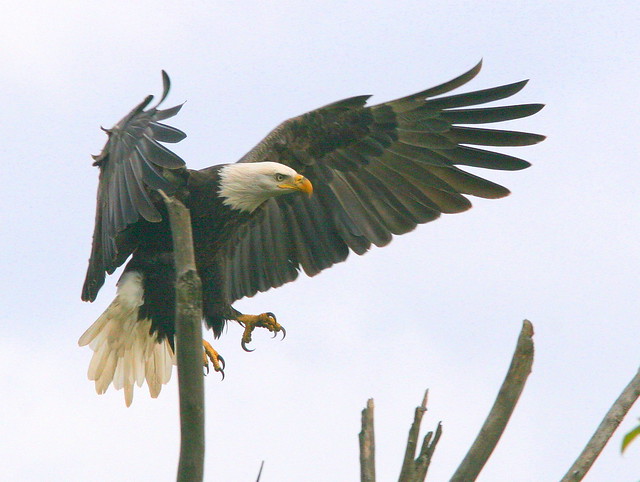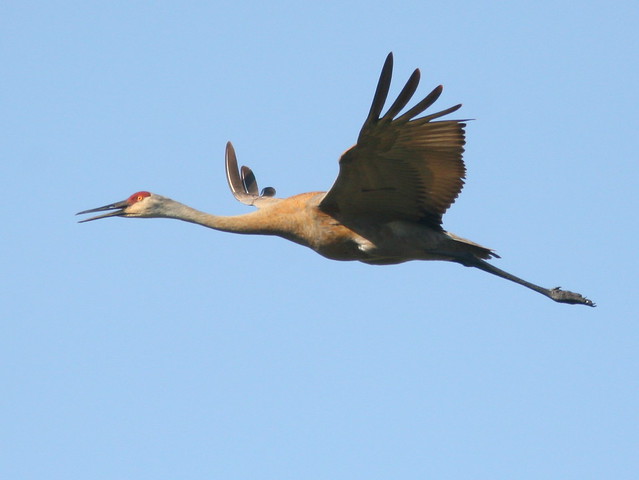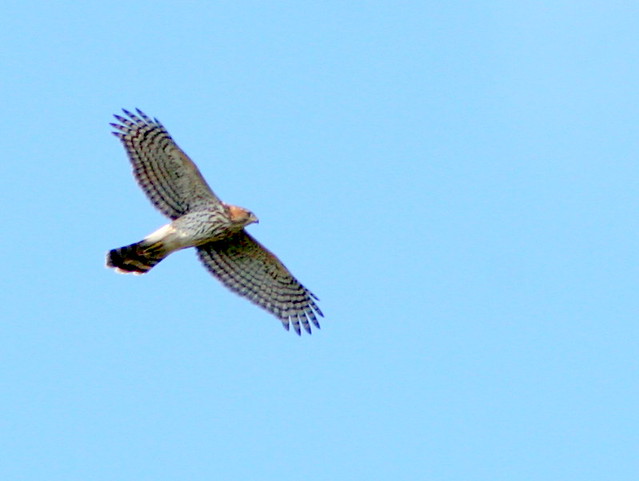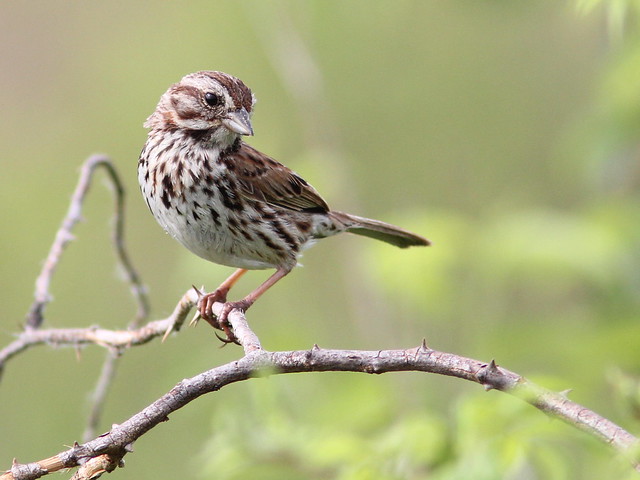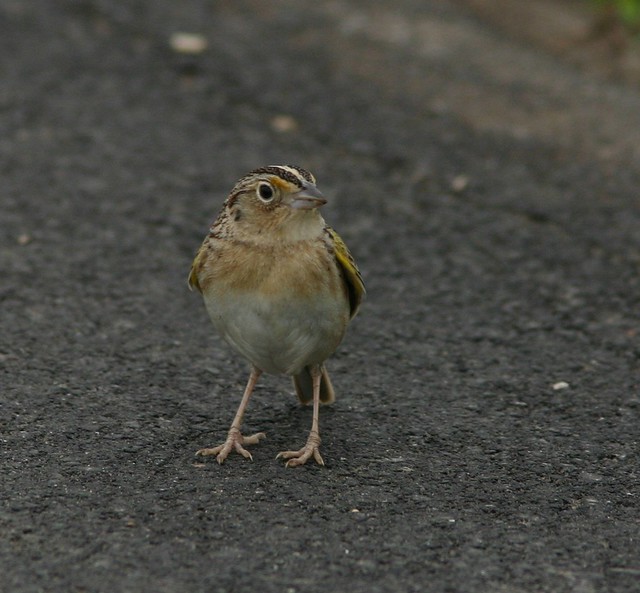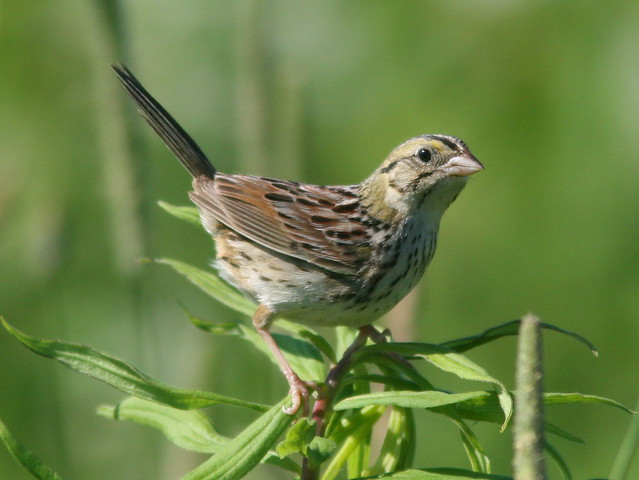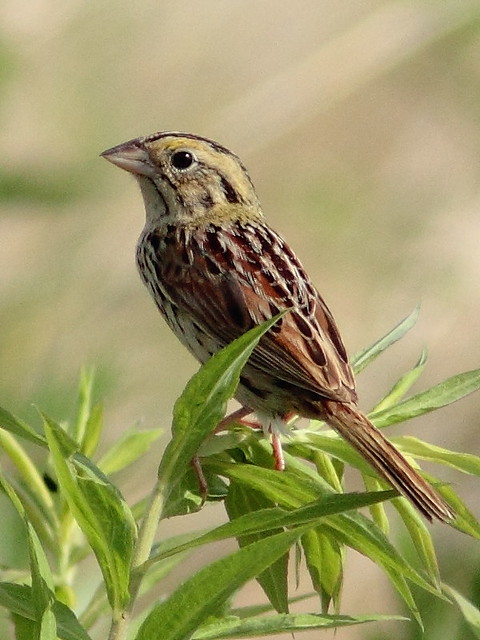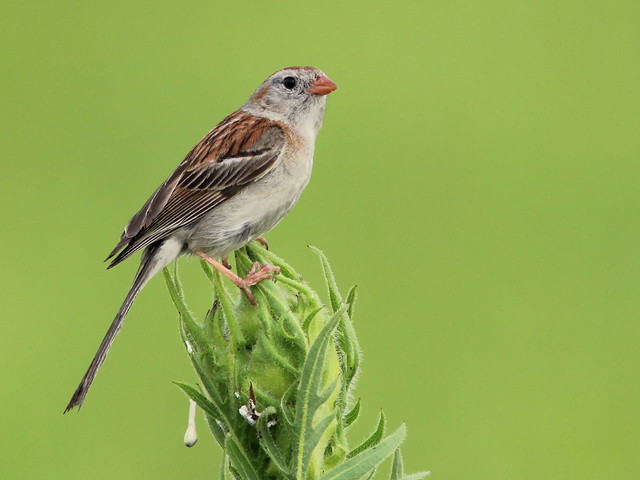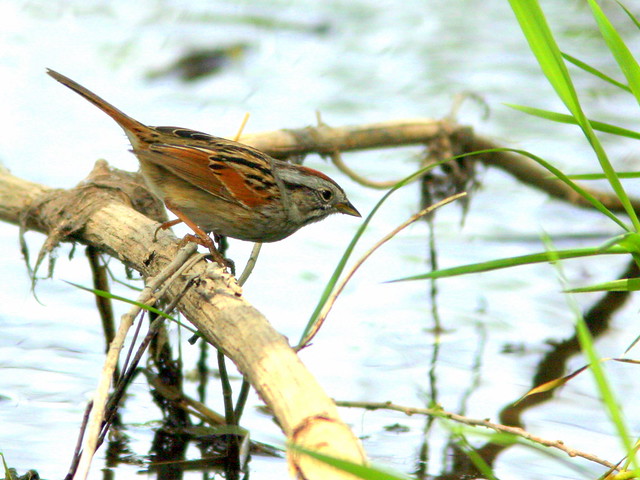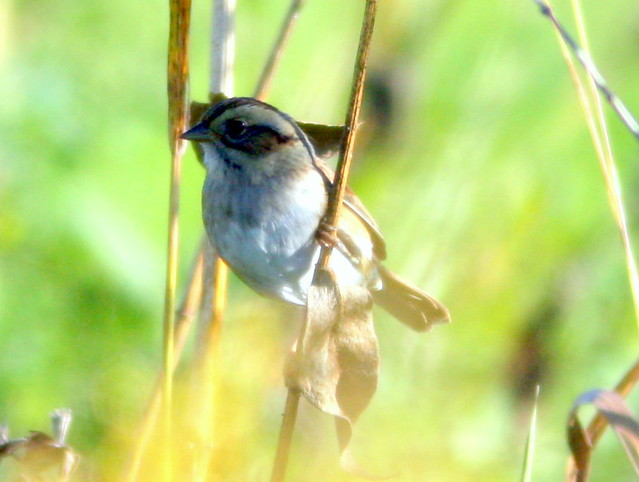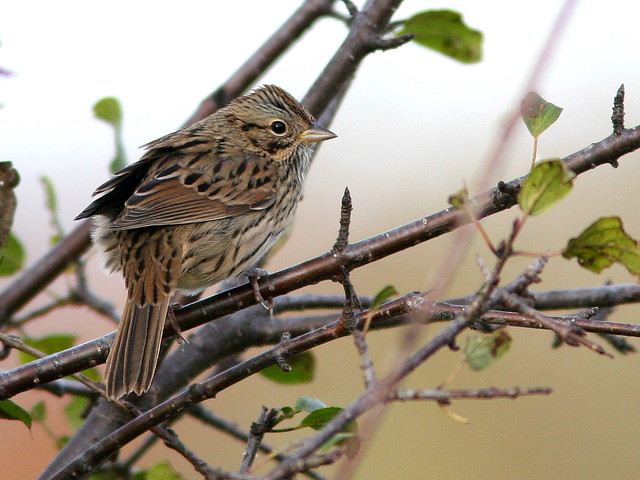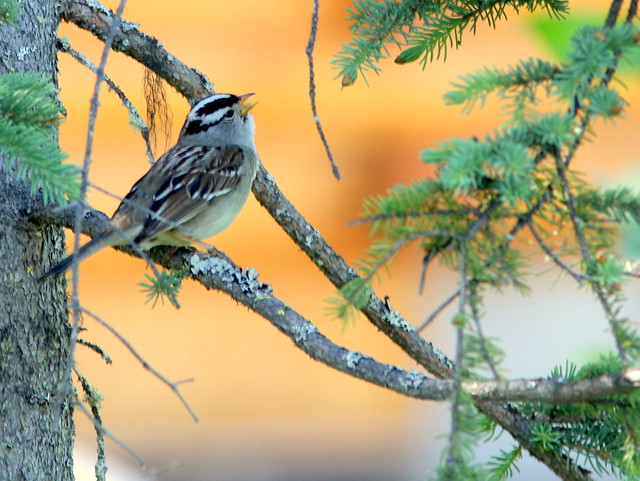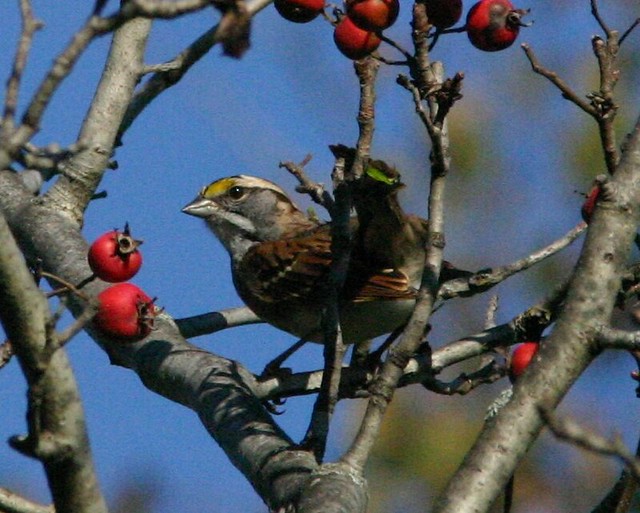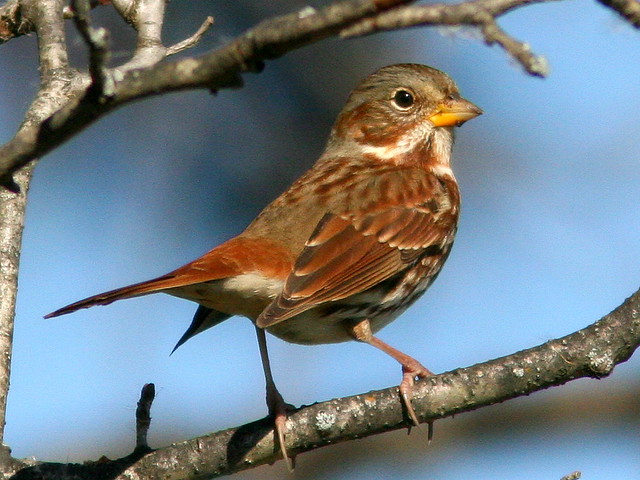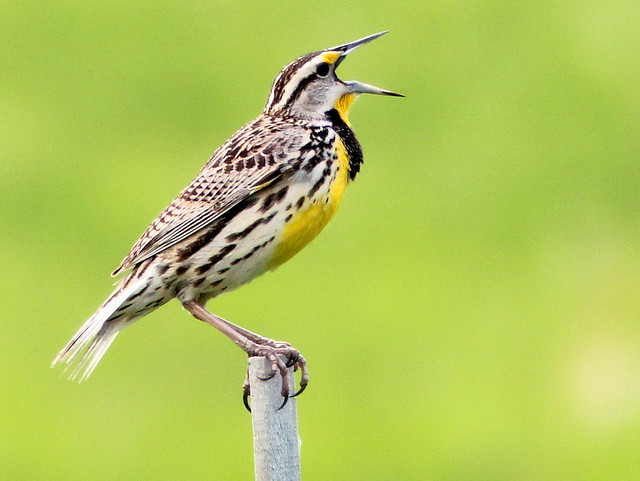Posted by: Ken @ 6:10 am
Hurricane Sandy brushed by a couple of days after our departure, but otherwise we picked a terrible time to leave south Florida! The low temperatures at our Florida home are finally dipping to around 60 degrees (F), about 20 degrees warmer than the daily highs in Chicagoland.
On our first morning upon returning to our Illinois condo, Mary Lou and I got out early to the east side of nearby Nelson Lake/Dick Young Kane County Forest Preserve. We immediately encountered a flock of 20+ Purple Finches that ranged in the woodlands at the lake’s eastern edge. Only one or two were in adult male plumage. It was this fall’s first reported sighting of the northern species at Nelson Lake.
They bear some resemblance to the common resident House Finches (photos below), a few of which joined the Purple Finches. Note that the upper edge of this House Finch’s bill (the culmen) curves down slightly, parrot-like. It also has shorter wings, less pronounced facial markings, darker streaks on its breast, and a shorter tail that is not notched as strongly as that of the more robust Purple Finch.
Here is another House Finch, showing how the red color of its forehead and breast has an orange tint (”brick colored”) while that of the Purple Finch looks richer rosy-pink or purple and suffuses its head and upper back and chest (as if dipped head first in raspberry juice).
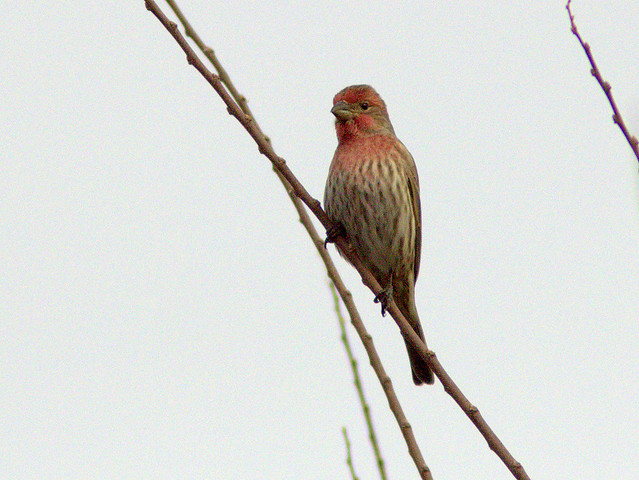
The other Purple Finches were brown females and hatch-year males. They are boldly streaked and exhibit a bright white line over their eyes and a straight culmen.
Several remained at close range as they feasted on berries.
For comparison, here is a photo of a female House Finch. Its face is noticeably plain and its streaks are less well-defined against a grayish background.
A Brown Creeper worked its way methodically up the trunk of a tree.
In typical fashion, the creeper flew to the bottom of an adjacent tree and again moved upward, while a White-breasted Nuthatch (”upside-down bird”) tended to do the opposite. Between the two species, both the upper and lower areas of the crevices in the bark are more thoroughly gleaned.
The first Saturday of each month is “Scope Day” a Nelson Lake. Despite freezing temperatures, about a dozen birders showed up. The lake shore usually extends much more closely to the viewing platform, but this year’s drought has taken a toll.
It was nice seeing (Slate-colored subspecies) Dark-eyed Juncos, hardy little winter visitors who do not make it down to south Florida. This one seemed to have indistinct wing bars, suggesting it might have some of the White-winged subspecies in its lineage.
Fox Sparrows were present in good numbers, many of them singing as if it were spring.
We saw a flock of seven unidentified swans, but they disappeared behind the trees before I could raise my camera. Canada Geese flew across the same area of sky. A hot air balloon added interest to the scene.
I also captured a pair of distant Sandhill Cranes in flight.
Hundreds of Common Grackles and other blackbirds, mostly Red-winged, flew overhead. Among them could be heard the calls of Rusty Blackbirds, a species I had seen before but never photographed. Luckily, a flock settled in a nearby tree, and I could pick out a few of the brownish Rusty species. They are slightly larger and have longer tails and more slender bills than Red-winged Blackbirds, but are smaller than grackles. Their pale eyes contrast with their dark faces.
A species of conservation concern, the Rusty Blackbird population is declining. There is no clear explanation as to why their numbers have significantly decreased 90% over the past 30 years, both in their breeding grounds in far northern boreal forests and in their winter range. Theories about the cause of the drop in population include destruction of winter and or breeding habitat and acid rain (read more here). Even though they associate with the Red-winged species, the Rusty Blackbirds often stay slightly away from their relatives, making them stand out.
It’s always nice to see American Robins, as they do not nest in south Florida and only show up there irregularly during the winter.
The past two weeks have been very eventful here in Illinois, limiting our time afield (as well as computer face time). Our son-in-law was deer hunting in North Carolina and fell as he was climbing into a tree stand. He broke bones in both legs and after he was stabilized was flown back to Illinois. Since he fell from a height of 20 feet, he is lucky that he landed on his feet rather than his head or back, as he could have been paralyzed or killed. He needed surgery (ten screws, two pins, a metal plate and cadaver bone transplants) on both legs and got out of the hospital only yesterday. We have been busy minding our two granddaughters.
We are looking forward to our return to Florida, where our local pair of Bald Eagles is preparing to start a family. Here is one of the pair that I photographed last breeding season.
One might imagine that the vast prairies of the middle western United States have always been there, but in the geological time scale they are relatively new, the product of global warming. The last glacial period reached its peak only about 18,000 years ago. Ice covered most of Canada and extended down into what are now the north Atlantic states and south to around the Ohio River in the Midwest.
Studies of the age and species of pollen collected at nearby Nelson Lake provide an interesting picture of the history of the prairie. As the ice receded over the next 2,000 years the area around my second home in Illinois resembled present-day Arctic tundra, covered by low-lying sedges and scattered evergreen trees. Humans crossed over to North America from Asia via the land bridge before the oceans rose to separate the continents.
Spruce forests then proliferated over the next 5000 years. The soil remained moist, favoring hardwoods such as ash and elm that began replacing the evergreens. About 11,000 years ago, as rainfall diminished, oak and hickory appeared, and the pollen record indicates that grasslands developed in forest openings. Beginning around 6,500 years ago, with the onset of a 3,000 year dry period, lightning-caused fires greatly enlarged the grasslands as they flourished and evolved into the landscape that greeted the first European settlers. Following this, as prairie was tilled and forests were cleared, exotic plant pollens appeared. Native grasses and plants declined.
A view of the old silo and restored tall grass prairie at the east entry of the Nelson Lake Marsh/Dick Young Forest Preserve, Kane County, Illinois. Ahead, a woodland borders the east shore of the lake.
There are wetlands along the southern and western edges of the lake, as well as in several potholes.
Prairies extend to the north and west of the lake. These 800 acres of former crop and grazing lands are actively managed by mowing and controlled burns to restore them as nearly possible to their original condition. In fall the grass turns a golden brown and is a rich source of seeds for overwintering wildlife.
Over the course of the seasons, the diverse habitat attracts a stunning variety of bird species, from the large…
…to the small.
Sandhill Cranes breed in the wetlands.
A Cooper’s Hawk soars overhead. The prairie suddenly falls silent.
Sparrows are among my favorite photographic subjects. Catching them out in the open and in good light requires patience (and I must admit that at my age I don’t mind the opportunity to rest a bit while I wait). Several species of sparrows breed in the grasslands and marginal savannahs. Song Sparrows are most abundant.
Savannah Sparrows often forage on the trails.
Tiny Grasshopper Sparrows are less often seen out in the open. Their numbers seem to depend upon the availability of short grass in areas that had been recently mowed or burned.
A few Henslow’s Sparrows breed in the prairie in small clusters.
The habitat requirements of this threatened species are very demanding, as they will not build a nest in a recently cleared area. Henslow’s Sparrows select nesting areas that have a couple of years of dead grass litter accumulated on the ground. They abandon the site after two or three years, when taller weeds and saplings start invading. They also require an expanse of tall grass prairie surrounding their breeding areas, and will not nest in fragmented habitat.
Henslow’s Sparrows are more often heard than seen, as they sneak through the grass like mice. They look as if they are putting great effort into their song, which comes out sounding like little more than a squeak. (Coincidentally, Henslow’s Sparrow has just been featured as ABA Bird of the Week!)
Field Sparrows prefer the woody edges of the prairies.
Swamp Sparrows build their nests in the marshes.
When I took the following photo back in October, 2010 I thought it was my first (and only) Clay-colored Sparrow seen at Nelson Lake. Thanks to an alert reader, I realize that it is actually another Swamp Sparrow. Its dark “mask” and impression of a clear breast, along with the fact that it was in a thicket out in the dry prairie made me jump to a hasty conclusion. Additional photos that may be viewed on my FLICKR site suggest a reddish color in its cap and wings, a bright white throat that contrasts with a faintly streaked upper breast, all characteristics of the Swamp Sparrow.
Chipping Sparrows are most commonly found in the woodlands.
Among the non-breeding sparrows, I have seen a few Lincoln’s Sparrows.
White-crowned Sparrows invade as winter approaches, and stay until spring. (This photo is my favorite of the species. I took it in Alaska. All the other images are from the Nelson Lake area.)
White-throated Sparrows favor the shrubby margins of the woodlands.
Fox Sparrows can be elusive, rummaging through the ground litter or hiding in the trees.
Now take a good look at this– will you ever again call sparrows just LBJs*?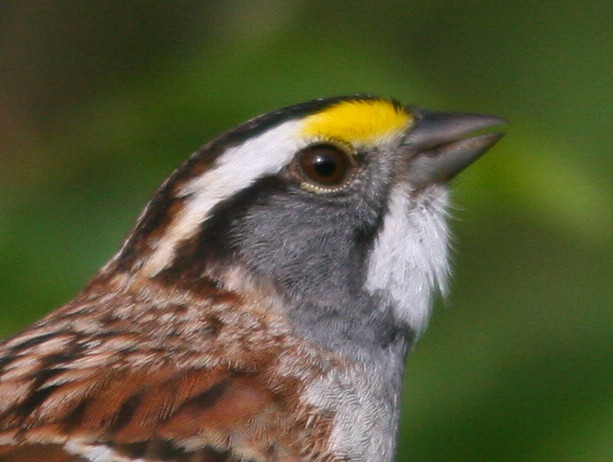
* “Little Brown Jobs”– NOT
Search archives of ROSYFINCH.COM
Posted by: Ken @ 4:54 am
On June 17, a few days before we returned to Florida, Bob Andrini, President of the Kane County Audubon, led four of us on a “ramble” through Prairie Green Wetlands, a publicly-owned preserve in Geneva, Illinois (see Map). We got out very early because the temperature was expected to rise to 100 (F) by midday. Illinois was in the throes of a record hot and dry spell. For nearly the whole month of July, it was often ten degrees hotter than back home in south Florida. The corn crop was in danger of complete failure.
Tenant farmers still plant 300 of the 580 acre preserve in corn and soybean. Soybean is the crop in the foreground as we entered from the east. While soybean is somewhat drought tolerant, many of the corn stalks have not even created silk, the essential step before pollination and setting of kernels. The growth of the corn stalks is stunted and the leaves are curled because of the lack of water.
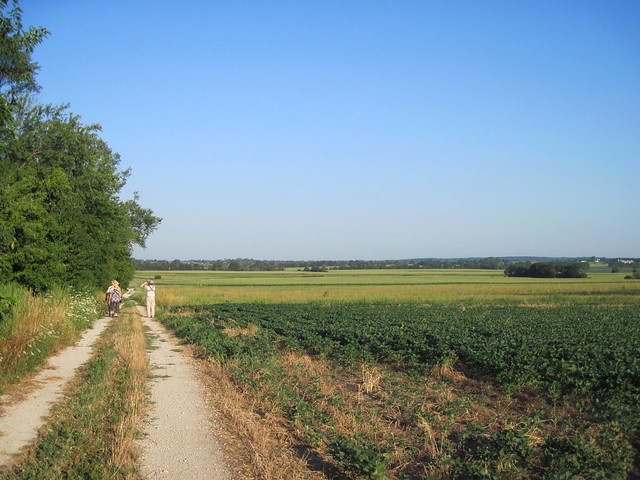
To the south (our left) is a fence line hedgerow, and beyond that part of the preserve’s 100 acres of restored tall grass prairie. It produced several bird species, including House Finches, Song and Savannah Sparrows, and many Red-winged Blackbirds. We heard and caught fleeting glimpses of two Sedge Wrens.
Dickcissels sang all around us. The yellow on this one’s breast was unusually clear and extensive.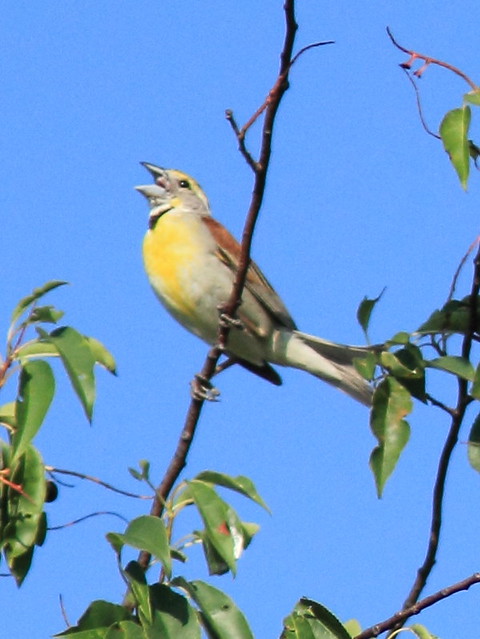
Indigo Buntings were in full song, but showed signs that they were molting into their drab fall plumage.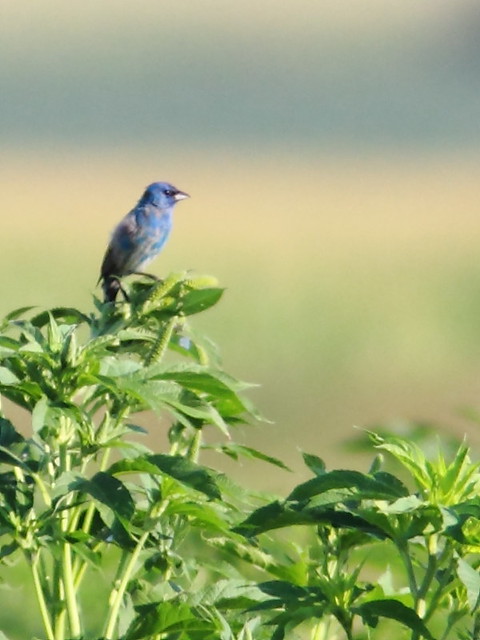
We walked westward past the crop fields into an 80 acre wetland area that is normally a moist grassland, but the soil was dry and brick-hard underfoot.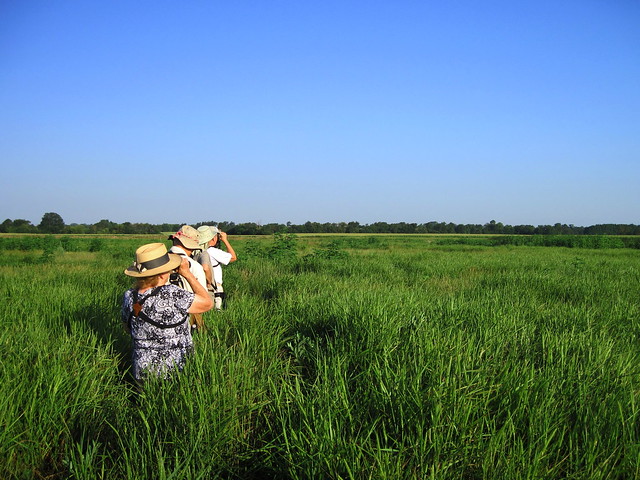
In past years a pair of Yellow-headed Blackbirds had nested in the sedges and cattails that surrounded a small lake at the far western end of the preserve. The drought has caused the lake to shrink to not much more than a puddle of water. The former lake bed is shriveled and dry. The Yellow-headed Blackbirds did not return this year.
As we approached what was left of the pond, we heard the sound of water splashing and expected to see a flock of ducks fly up from the surface. Instead, we realized that the noise came from hundreds or even thousands of small frogs attempting to escape from us. The pond looked as if it were full of rocks, until the little frogs started jumping.
The amphibians were clearly in great danger from dehydration and were easy prey for herons and other predators.
Some, like this one, had not fully emerged from the tadpole stage.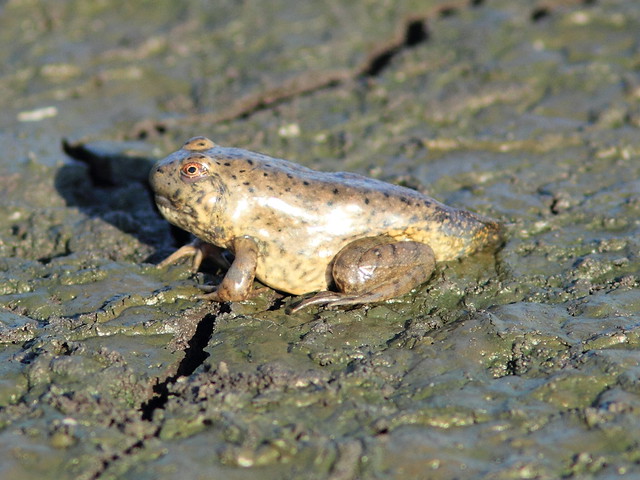
Others seemed mired in the sticky mud. Note that there is something that looks like a cluster of small white elongated ovoid objects on its abdomen near the fold of its left thigh. They resemble the cocoons of parasitic wasps such as those that lay their eggs on caterpillars such as these, depicted on a tomato hornworm. I could find no reference to such a phenomenon, so I am possibly misinterpreting the image. Click to enlarge to full size if you wish to examine the cluster more closely. 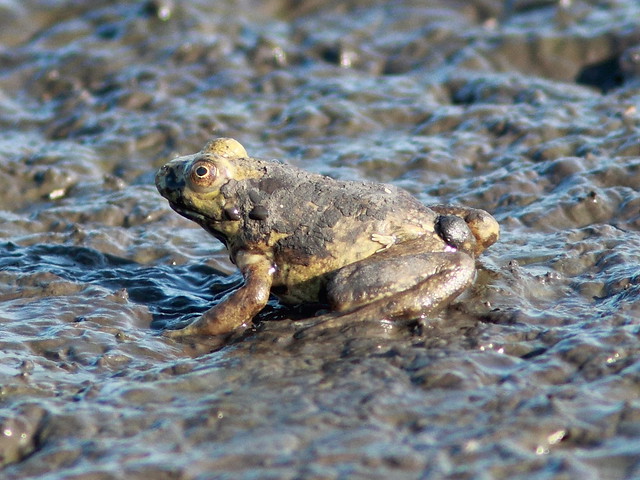
Around the margins of the pond, several Semipalmated and Least Sandpipers foraged. Leg color helps distinguish the two sandpiper species. The Least Sandpiper, on the left, has yellow legs while the Semipalmated species has black (but is this actually a Least Sandpiper with muddy legs?). See this informative article by Cameron Cox, in which he points out that the Least Sandpiper tends to point its bill more nearly straight down while foraging as opposed to the Semipalmated Sandpiper, which extends its neck further away from its body. This photo does illustrate a difference between the two species, though it captures only an instant in time.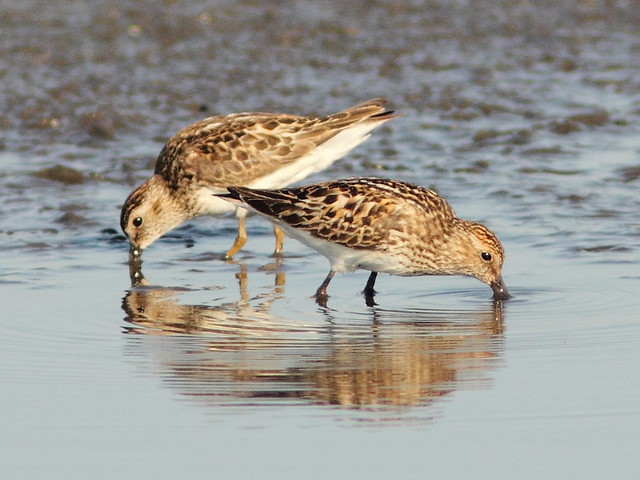
This Semipalmated Sandpiper’s grayish back contrasts with the warm brown of the Least Sandpiper. Mud on its bill makes it look fat and bulbous. This appearance has accounted for some false reports of very rare Spoon-billed Sandpipers.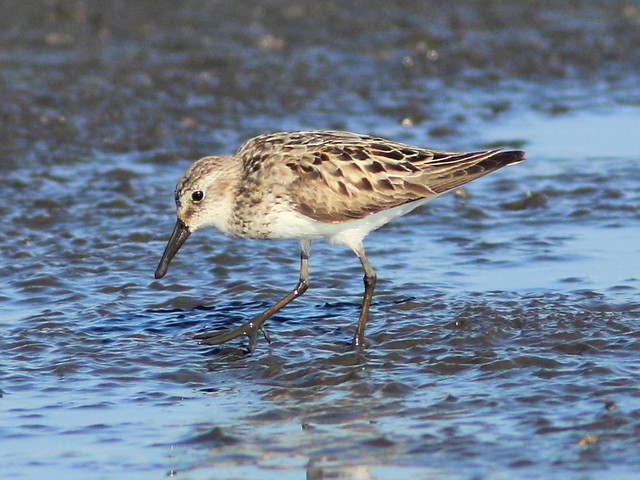
Least Sandpipers tend to forage around the edge, though they may wade in up to their bellies. This one checks out a frog…
…as a Semipalmated Sandpiper walks by. Its bill, clean in this case, appears heavier and straighter than the dainty droopy one of the Least Sandpiper.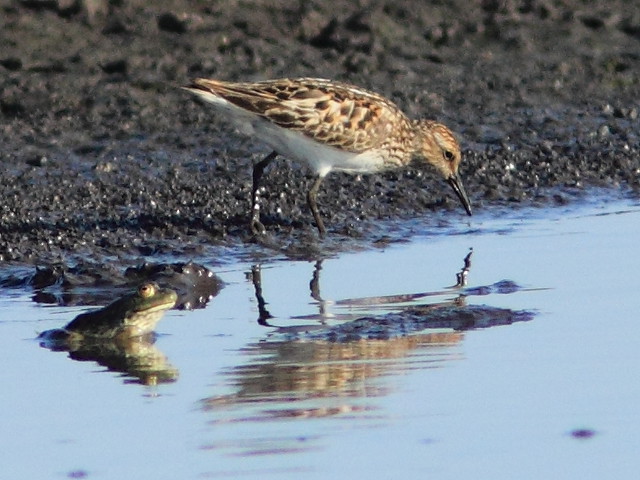
One sandpiper stood out as appearing a bit larger than the Least and Semipalmated Sandpipers. It was possibly longer-winged, but the tips of the wings did not extend beyond the tail tip as would be expected in a Baird’s Sandpiper. It had a rather prominent dark area on its neck and upper chest. Might it be a Pectoral Sandpiper, or since it is seen between two smaller Least Sandpipers, just a larger-appearing Semipalmated? We could not concur on its identity.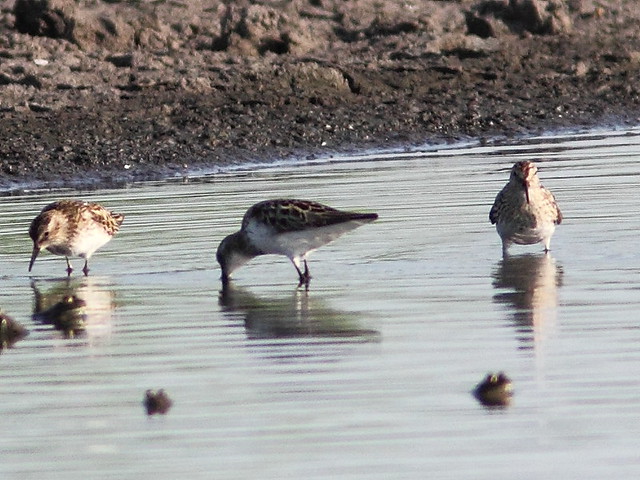
Here is a closer look at the (so far) unidentified sandpiper.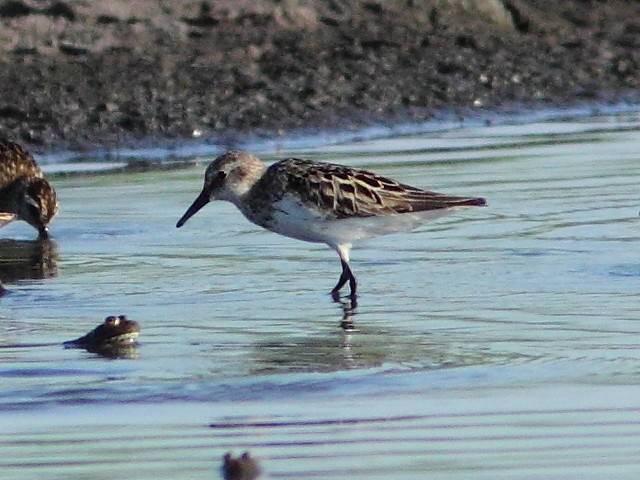
The white breast of this Spotted Sandpiper extends upward in front of the wings. Barring on the wing coverts suggests that is a young bird. It briefly chased after a frog, but did not catch it. 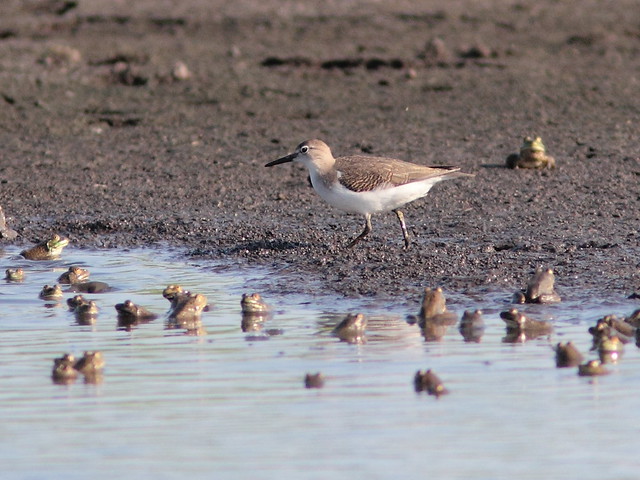
Here is a closer view of the Spotted Sandpiper, with a small prey item in its beak.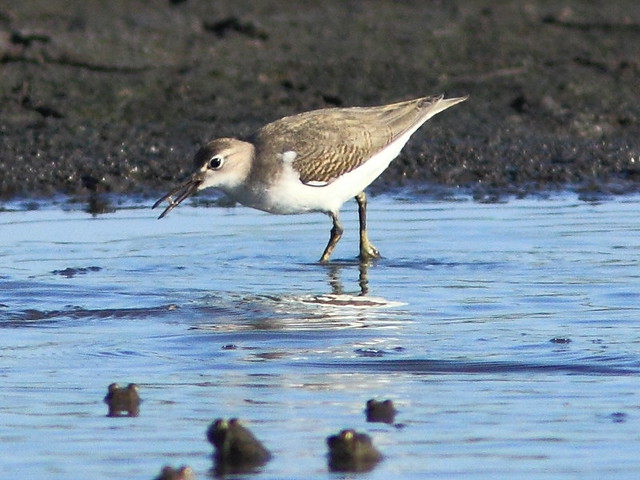
A Killdeer flew in and foraged in the dry lake bed. Its feathers appear worn, ready for the post-breeding molt.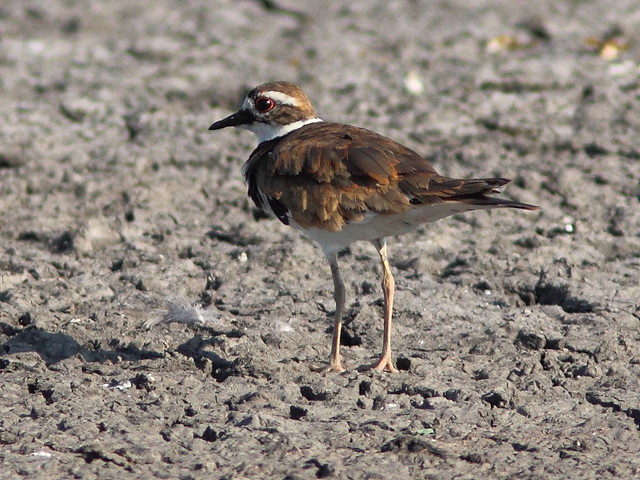
I would have expected many herons to be gathered around to feast on the frogs, but only a lone Green Heron flew up. Its streaked breast indicates it is an immature bird. 
Like the Killdeer, the Dickcissel sings out its name. 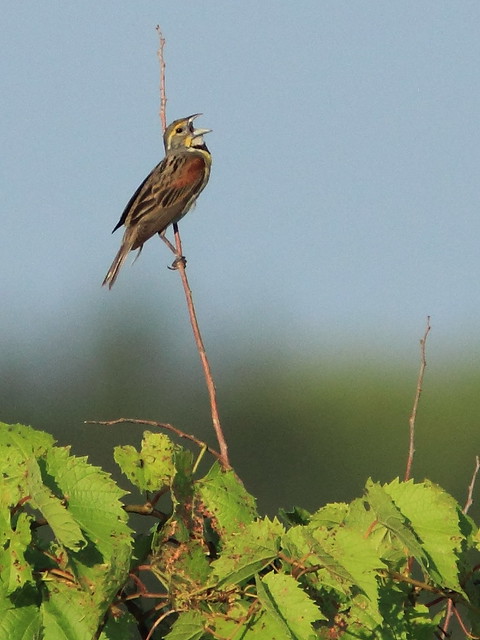
Posted by: Ken @ 5:46 am
Here is my first photo submission to the weekly Bird D’pot (Bird Digital Photography) meme hosted by I’D-Rather-B-Birdin’
It is an Eastern Meadowlark that I photographed last Spring at Nelson Lake Marsh/Dick Young Forest Preserve in Kane County, Illinois. It was just selected by Cornell Laboratory of Ornithology to illustrate the “Bird of the Week.” (And I didn’t have to enter any contest!)
Here is a series of images from yesterday morning’s walk at Nelson Lake/Dick Young Forest Preserve in Kane County, Illinois. The water level in Nelson Lake was very low and there were extensive mud flats. While I was observing the hundreds of Killdeers and a few peeps that were congregated along the edge of the water, I photographed them from the east observation deck.
The total unobstructed view was about 110-120 degrees. This panoramic image, stitched from three separate overlapping photos, includes 108 birds that can fairly safely be counted as Killdeers. There are 9 other birds that look like sandpipers, and 5 blackbirds and starlings. (To better visualize the birds and perhaps provide a more accurate count, click on the photo and select the original size image.)
I suddenly saw two adult Bald Eagles fly in and appear to be circling a small area near the middle of the remaining lake, about 1/4 mile away. As they were beyond the range of my 10x binoculars, I found it difficult to determine the exact prey that these two eagles were trying to catch.They seemed to be hunting cooperatively, taking swoops at what looked like a female Mallard accompanied by a smaller but longer-necked bird that looked like a Pied-billed Grebe. There appeared to be several ducklings in the water and in the grass that is now growing out of the shallow water.
I captured this image just as one of the eagles hovered overhead the prey and the other flew in low from the right and appeared to be aiming for one of more of the ducklings. (Again, click on photo for enlarged images.)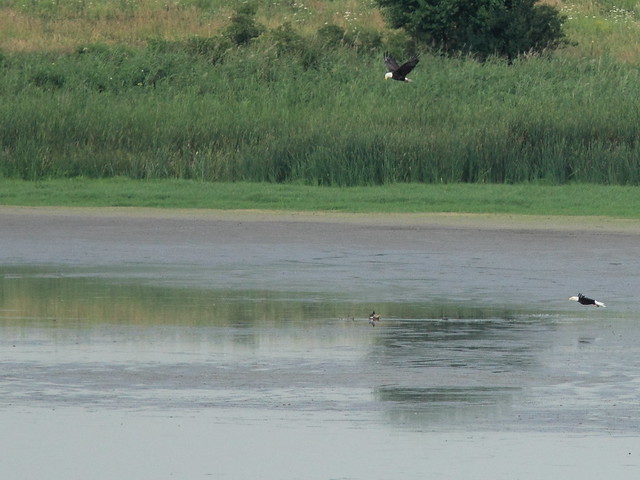
The “attack” eagle apparently missed its target. Either the duck or the eagle caused the splash that can be seen in this photo, taken less than one second later than the first.

The eagles circled and a few seconds later attacked a second time. The photo reveals that there is a long-necked swimmer next to the adult duck– I believe it may be a Pied-billed Grebe.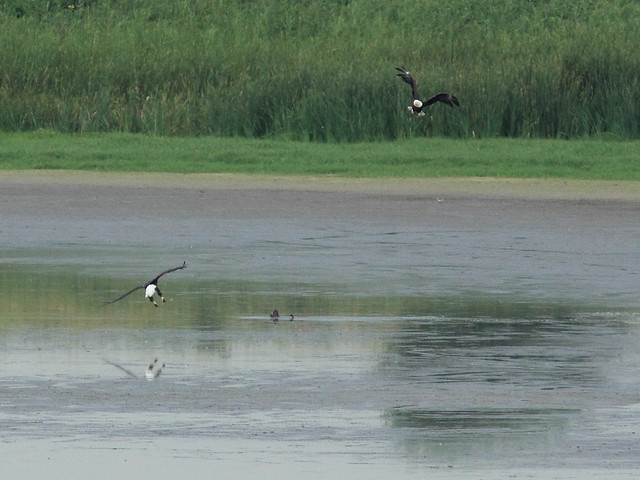
Less than a half second later, the “attack” eagle closes in.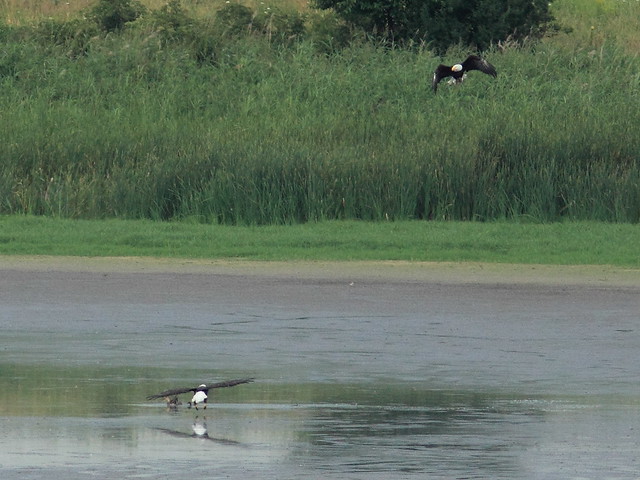
It appears to be aiming for the ducklings (or baby grebes?) that are gathered at the edge of the grassy area to the right of the adults. Again, note that there are two (apparent) adult birds.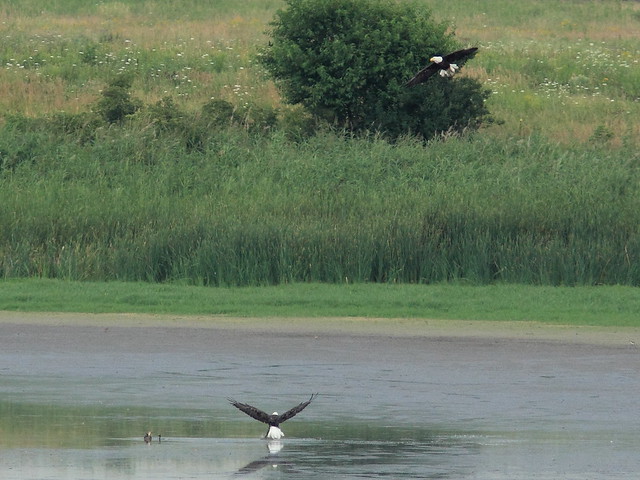
The eagle lifts off– I thought it missed the target again, as its talons appear to be empty.
However, this photo, taken 32 seconds later, shows that the second of two cooperative attempts appeared to have been successful, as the first eagle departed with a small prey item– a duckling? (I had to greatly sharpen the image to better demonstrate the eagle’s talons holding the prey). 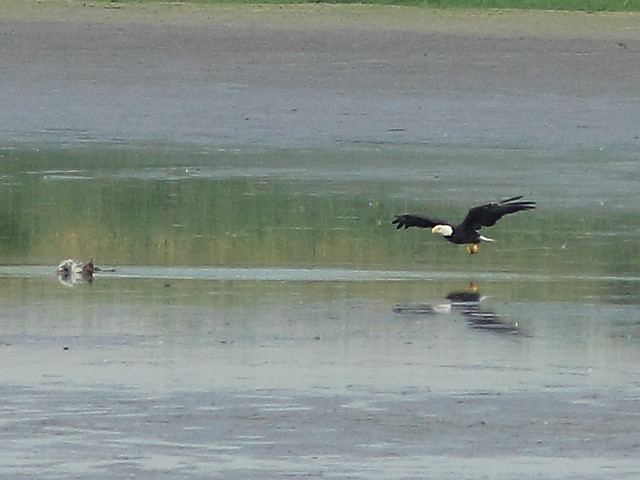
Only eleven seconds later, the other eagle makes a pass for the ducklings and they are seen diving to safety. Here the fleeing adult looks more like a grebe than a duck.
Finally, the second eagle circled and then departed the scene.